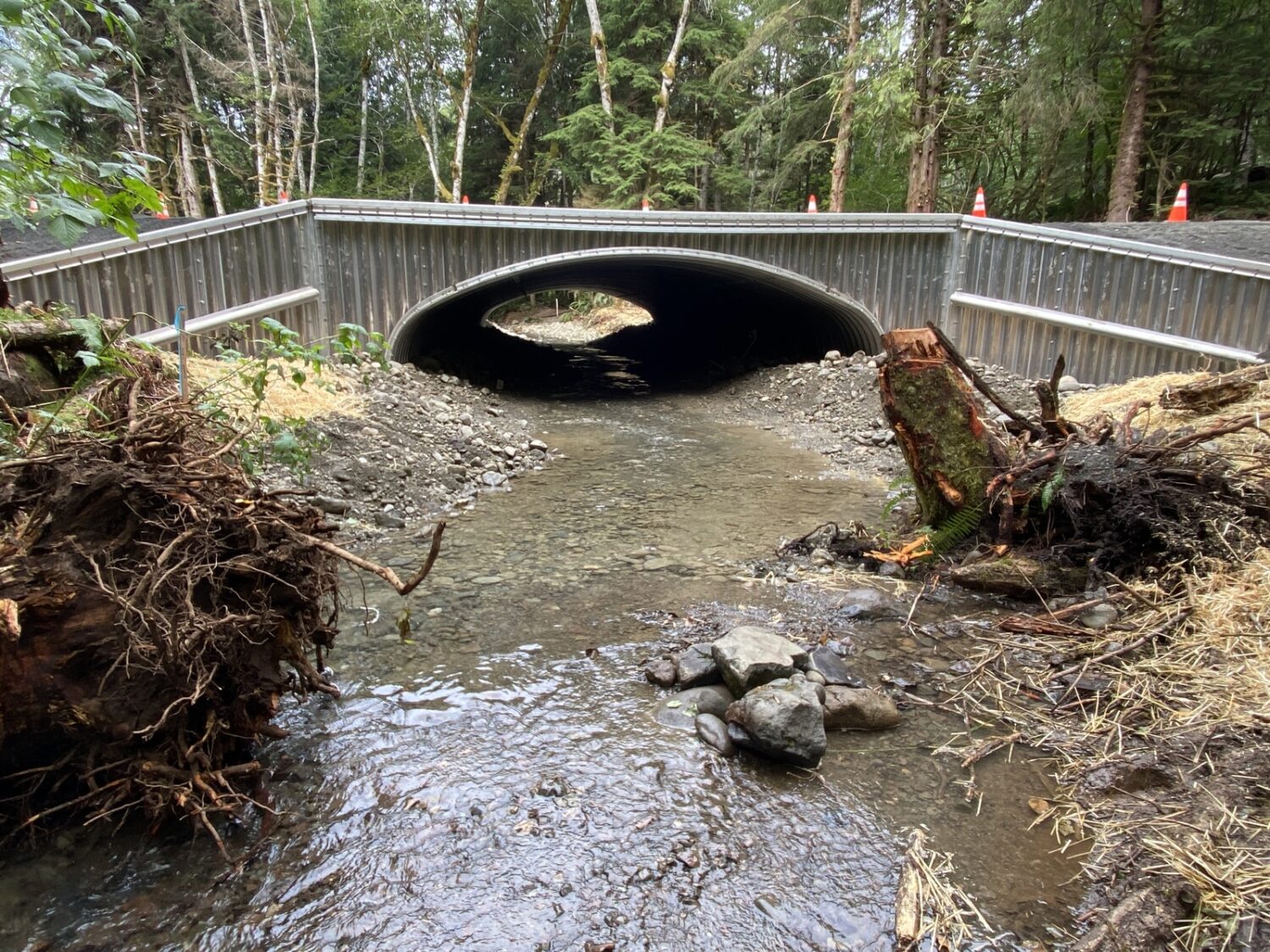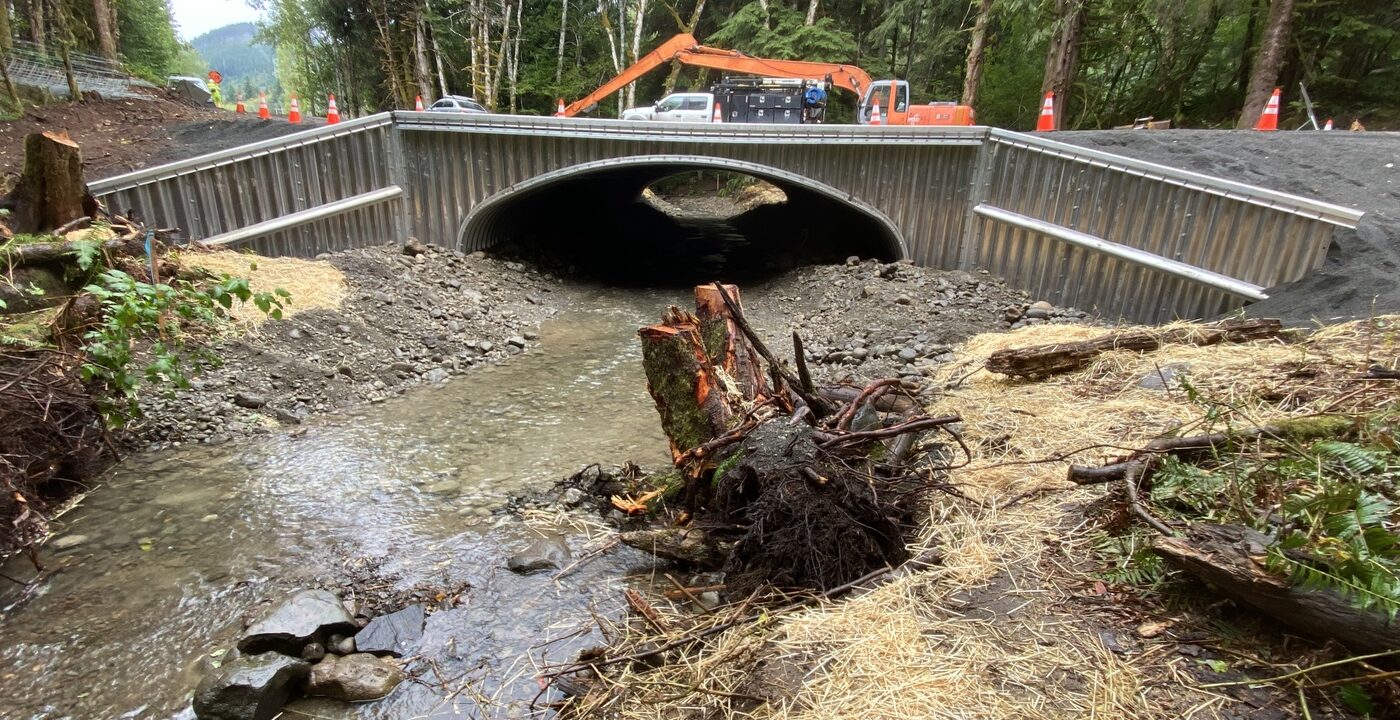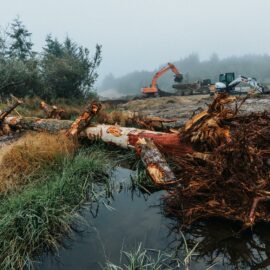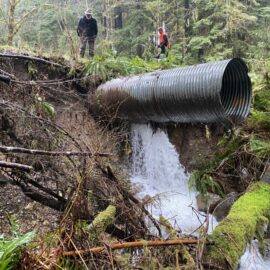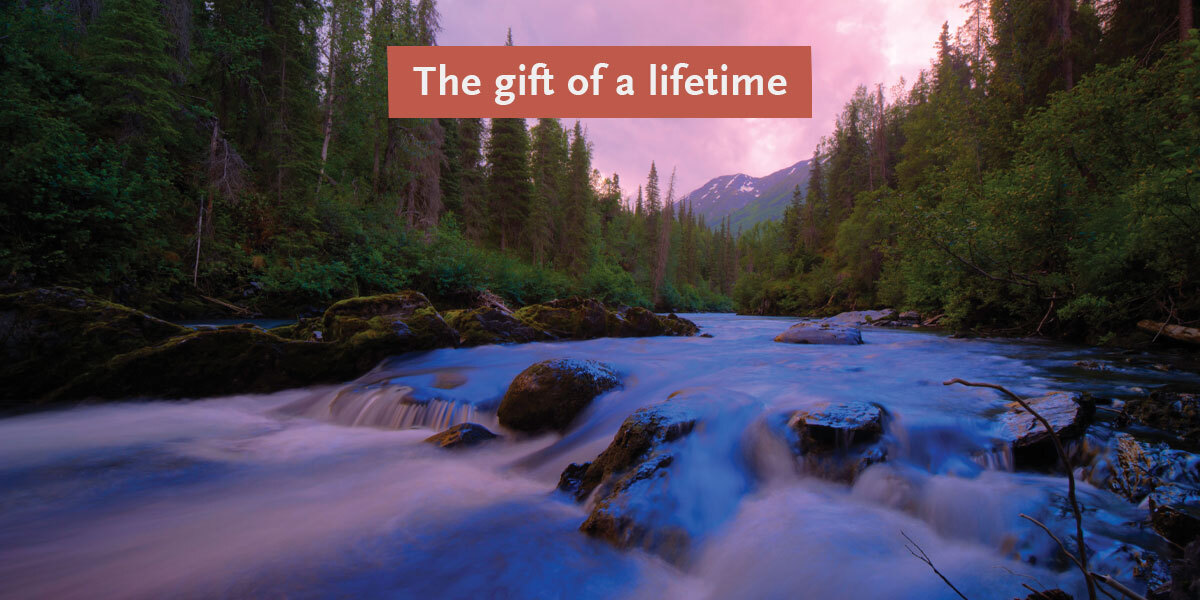On Washington’s Olympic Peninsula, we’re sizing restoration work for long-term success.
It’s one thing to see the specs for Anton Creek’s new culvert. At 72 feet long and 24 feet wide, this road-spanning structure is sized for the flood events of the future. On paper, the sleek design looks impressive.
But what really impresses is watching this freshwater thoroughfare come together. This summer, Wild Salmon Center Habitat Project Manager Betsy Krier spent weeks on Anton Creek, observing massive excavators move mattress-sized pieces of aluminum into place in this Sol Duc River tributary—pieces then expertly assembled by construction professionals in orange vests and hardhats.
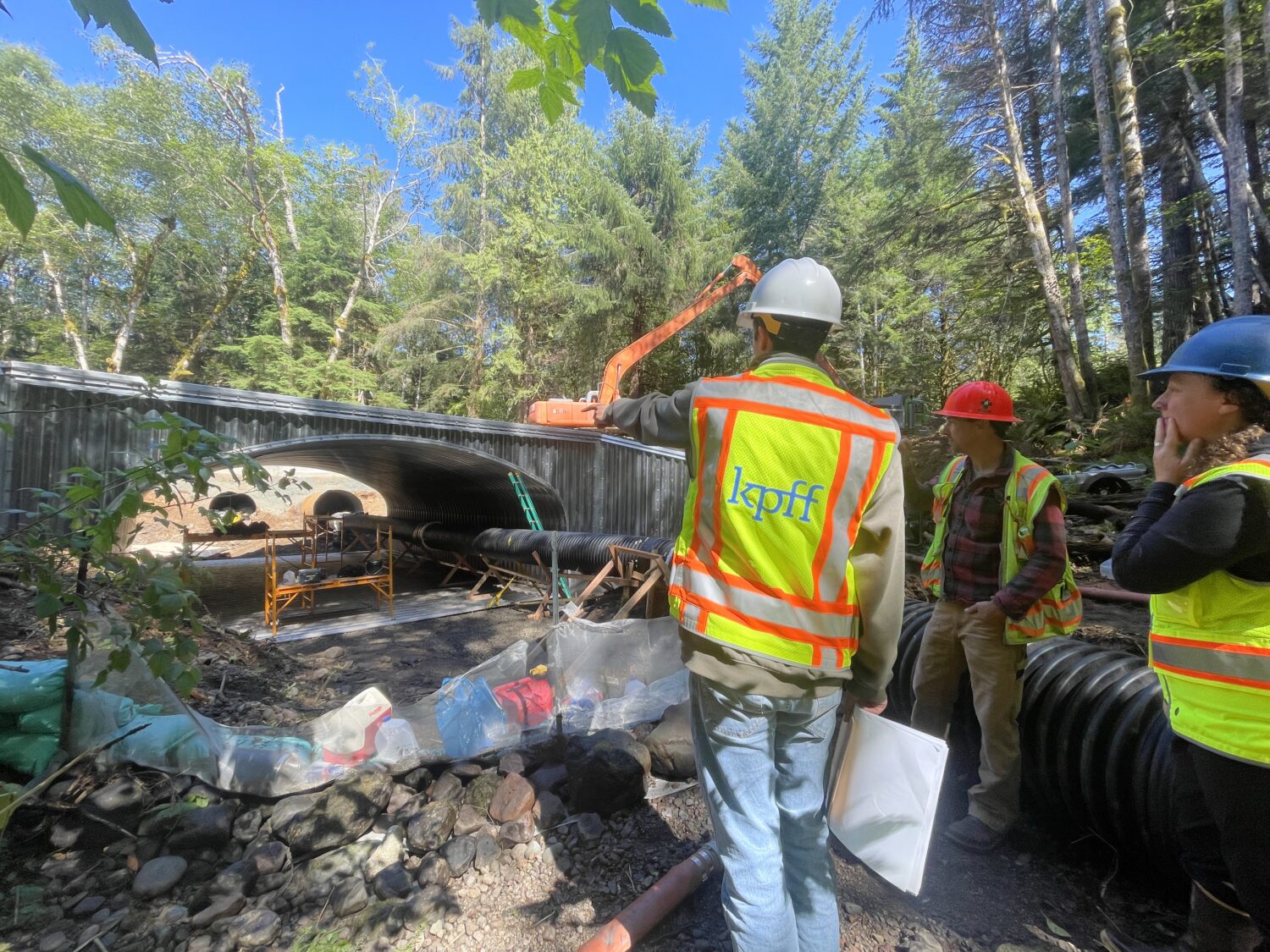
On September 20—right on time—crews wrapped up work in this key salmon spawning and rearing stream in the larger Quillayute Basin. The sight of Anton Creek now flowing freely under Bear Creek Road was enough to make Krier a bit misty-eyed.
“For months of the year, the rusty old pipes here were blocking fish from some truly excellent upstream habitat,” Krier says. “Now fish can get upstream all year. And they won’t even know they’re going under a road.”
Krier practically lived at Anton Creek this summer, supervising work to replace the road’s aging, undersized pipes with this nature-mimicking culvert. The new pipe is roughly five times the size of its predecessor, even with its three-foot bed of sediment, gravel, and wood.
The stakes were high, Krier says. Anton Creek represents the largest WSC-led restoration project to date on Washington’s Olympic Peninsula—entailing not just the installation of the shiny new culvert, but also the buildout of a temporary crossing for local residents and the careful defishing and rerouting of the creek before culvert replacement could even start.
Within minutes of reconnecting the temporarily rerouted stream to its restored channel, Krier and WSC colleague Nicole Rasmusssen spotted young lamprey wriggling up the free-flowing creek—likely the first such lamprey journey in a very long time. That immediate payoff, Krier says, testifies to the enormous care and skill that construction crews and engineers alike brought to this ambitious project.
Within minutes of reconnecting the stream to its restored channel, Krier and Rasmussen spotted young lamprey wriggling up the free-flowing creek.
“Restoration work on this level is supremely technical,” Krier says. “The crews at Bruch & Bruch Construction knocked it out of the park, and the KPFF engineers were right here beside me a lot of the time. Every detail, every problem, had an expert right on it the whole time.”
On Anton Creek, Quillayute River basin wild coho, Chinook, steelhead, and lamprey now have year-round access to upstream habitat. And that’s just the half of it. Just 200 feet north of Anton Creek this summer, Bruch & Bruch crews simultaneously installed a second, almost equally giant new culvert in neighboring Cedar Creek.
Together, the Anton and Cedar Creek projects reopened roughly five miles of excellent spawning and rearing habitat for salmon in the larger Quillayute River Basin. And like Anton Creek, Cedar Creek’s new culvert is also built for modern climate realities—for more robust and higher-than-average 100-year-floods, not the floods of the past. This forward-thinking design not only benefits residents near Bear Creek Road, but community members across the Quillayute watershed.
“Restoration work on this level is supremely technical. Every detail, every problem, had an expert right on it the whole time.”
Wild Salmon Center Habitat Project Manager Betsy Krier
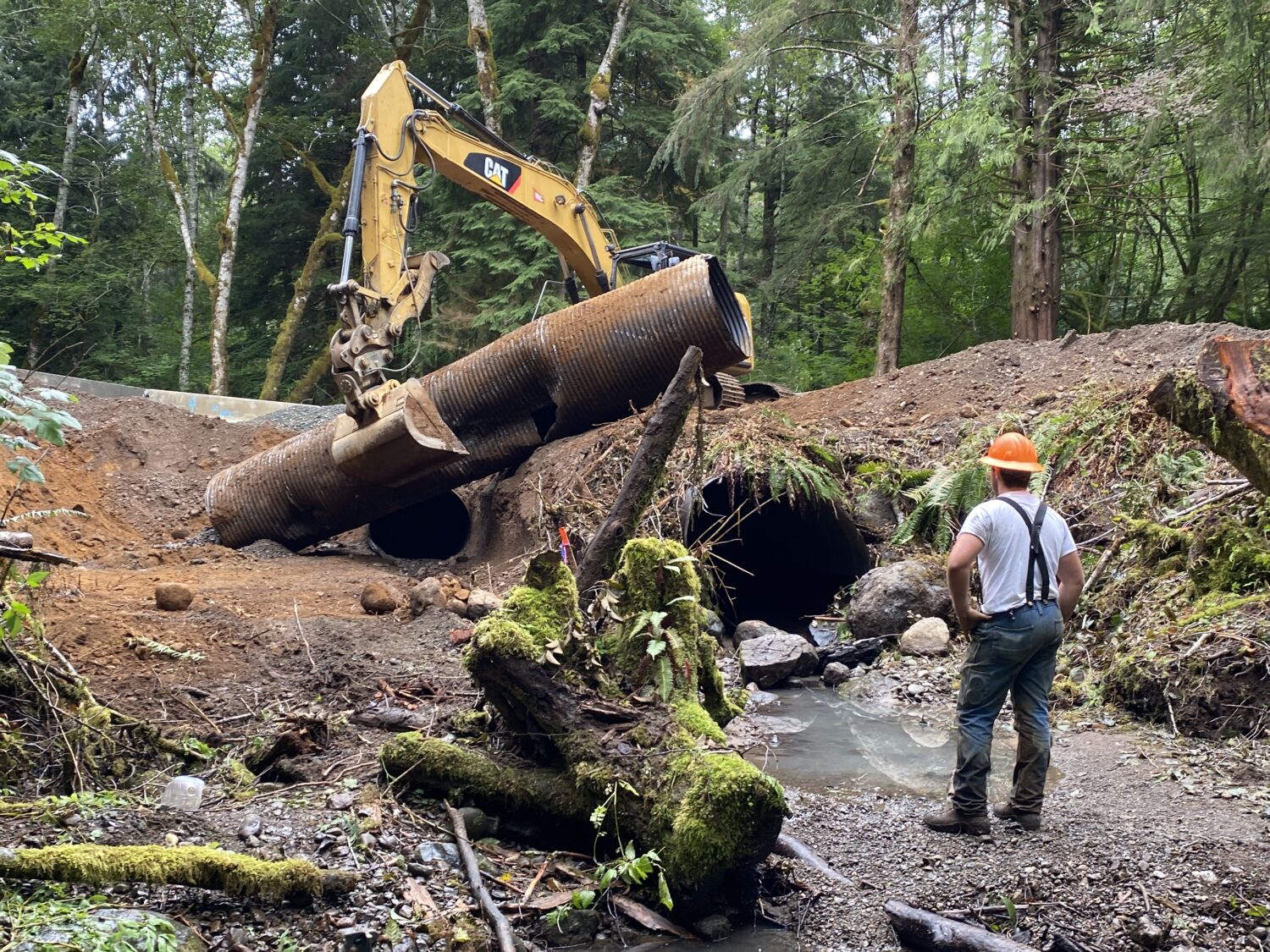
“These projects aren’t one-offs,” Krier says. “They’re part of our larger plan to target those fish passage projects that offer wild fish and Washington Coast communities the absolute highest return on investment.”
To build this high-value pipeline, WSC and our partners in the Cold Water Connection Campaign have identified, mapped, and prioritized projects that meet that high ROI threshold. Then we shepherd a shortlist of the very best projects through design, funding, and construction—aiming to maximize long-term benefits for both wild fish and coastal residents. Each project we complete moves WSC and our partners closer to the campaign’s ambitious 10-year goal: 125 river miles reopened for Washington Coast wild fish.
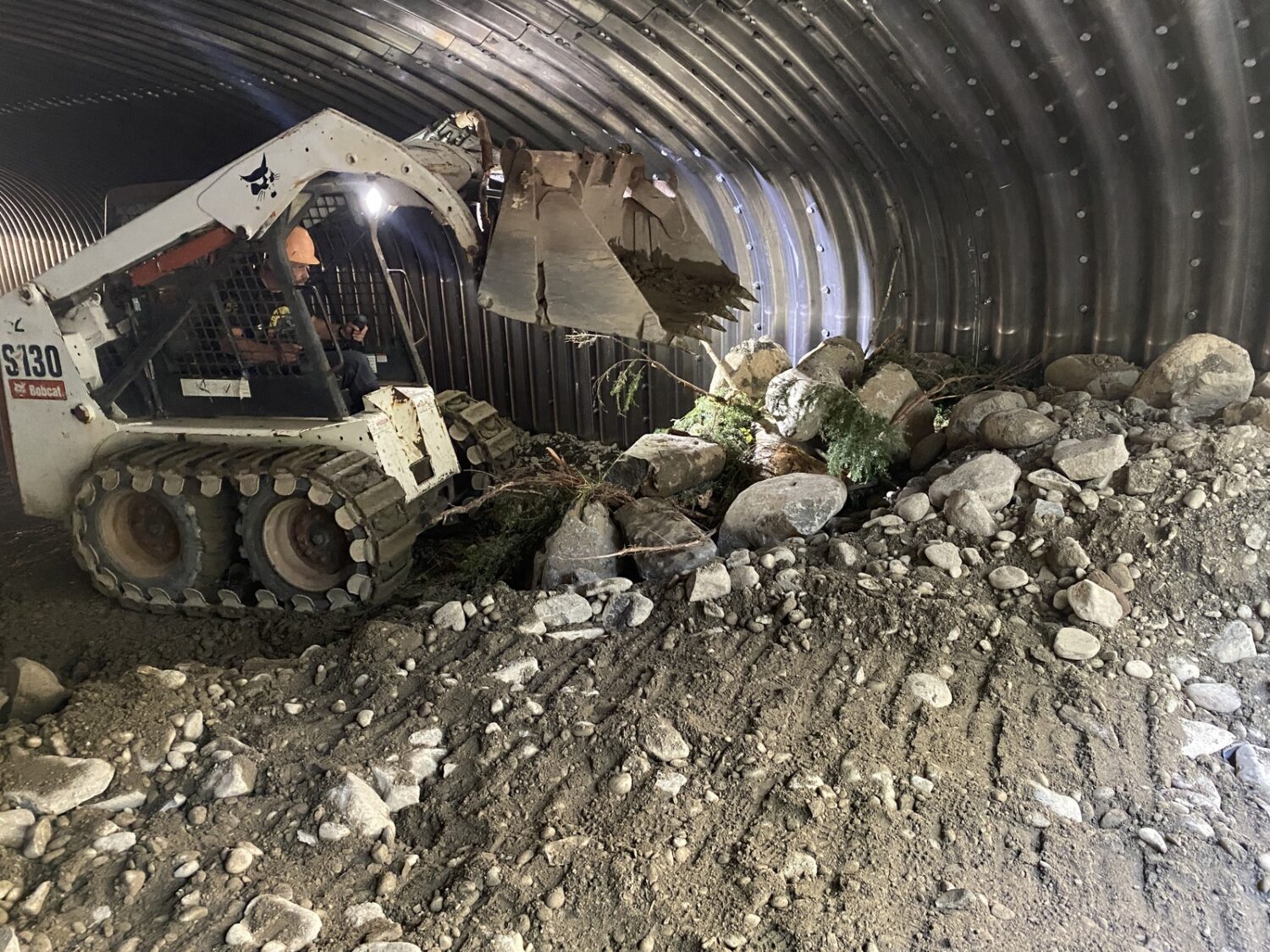
Wild Salmon Center and our partners in the Cold Water Connection Campaign aim to reopen 125 river miles for Washington Coast wild fish over 10 years.
“Problematic fish barriers aren’t just problems for salmon,” Krier says. “Across the Olympic Peninsula, we know there are thousands of aging and undersized culverts, which can mean road washouts, flood damage, and other headaches for the people living near these rivers and creeks. For both people and fish, we need long-term solutions like this.”
As culverts age and climate change intensifies weather events, WSC and our Cold Water Connection Campaign partners are speeding and scaling our work across the Olympic Peninsula. We’re motivated by the fact that Washington Coast salmon strongholds like the Hoh, Queets, Quillayute and Quinault rivers have the greatest likelihood of providing strong runs of wild salmon and steelhead into the future.
Thanks to private donor support and fresh waves of federal funding for fish passage from agencies like NOAA, U.S. Fish & Wildlife Service, Washington Department of Fish & Wildlife, and Washington’s Recreation and Conservation Office, county roads will remain part of our focus for years to come—starting with three more projects here in underserved Clallam County. Each will bring us closer to our 10-year goal. And like Anton and Cedar creek, each will be part of a larger salmon story: one of partnership, heart, and hope for the future.
“Problematic fish barriers aren’t just problems for salmon. For both people and fish, we need long-term solutions like this.”
Wild Salmon Center Habitat Project Manager Betsy Krier
